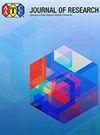Few-Shot Object Detection Based on Adaptive Attention Mechanism and Large-Margin Softmax
IF 1.2
4区 工程技术
Q4 MATERIALS SCIENCE, TEXTILES
引用次数: 0
Abstract
Recently, a DCNet consisting of a dense relation distillation module and a context-aware aggregation module has achieved remarkable performance for the few-shot object detection task. In this article, we aim to improve the DCNet from the following two aspects. First, we design an adaptive attention module, which is equipped in the front of the dense relation distillation module, and can be trained together with the remainder parts of the DCNet. After training, the adaptive attention module helps to enhance foreground features and to suppress the background features. Second, we introduce a large-margin Softmax into the dense relation distillation module. The large-margin Softmax with a hyperparameter can normalize features without reducing the discriminability between different classes. We conduct extensive experiments on the PASCAL visual object classes and the Microsoft common objects in context data sets. The experimental results show that the proposed method can work under the few-shot scenario and achieves the mean average precision of 50.8% on the PASCAL visual object classes data set and 13.1% on the Microsoft common objects in context data set, which both outperform the existing baselines. Moreover, ablation studies and visualizations validate the usefulness of the adaptive attention module and the large-margin Softmax. The proposed method can be applied to recognize rare patterns in fabric images or detect clothes with new styles in natural scene images.基于自适应注意机制和大余量Softmax的小镜头目标检测
最近,一种由密集关系蒸馏模块和上下文感知聚合模块组成的DCNet在小样本目标检测任务中取得了显著的性能。在本文中,我们将从以下两个方面对DCNet进行改进。首先,我们设计了一个自适应注意力模块,该模块安装在密集关系蒸馏模块的前端,可以与DCNet的其余部分一起训练。经过训练后,自适应注意模块有助于增强前景特征,抑制背景特征。其次,我们在密集关系蒸馏模块中引入了大余量Softmax。带有超参数的大间距Softmax可以在不降低不同类别之间的可区分性的情况下对特征进行归一化。我们在上下文数据集中对PASCAL可视化对象类和Microsoft通用对象进行了广泛的实验。实验结果表明,该方法可以在少镜头场景下工作,在PASCAL可视化对象类数据集上达到50.8%的平均精度,在Microsoft上下文通用对象数据集上达到13.1%的平均精度,均优于现有基线。此外,消融研究和可视化验证了自适应注意力模块和大裕度Softmax的有效性。该方法可用于织物图像中罕见图案的识别或自然场景图像中新款式服装的检测。
本文章由计算机程序翻译,如有差异,请以英文原文为准。
求助全文
约1分钟内获得全文
求助全文
来源期刊

AATCC Journal of Research
MATERIALS SCIENCE, TEXTILES-
CiteScore
1.30
自引率
0.00%
发文量
34
期刊介绍:
AATCC Journal of Research. This textile research journal has a broad scope: from advanced materials, fibers, and textile and polymer chemistry, to color science, apparel design, and sustainability.
Now indexed by Science Citation Index Extended (SCIE) and discoverable in the Clarivate Analytics Web of Science Core Collection! The Journal’s impact factor is available in Journal Citation Reports.
 求助内容:
求助内容: 应助结果提醒方式:
应助结果提醒方式:


